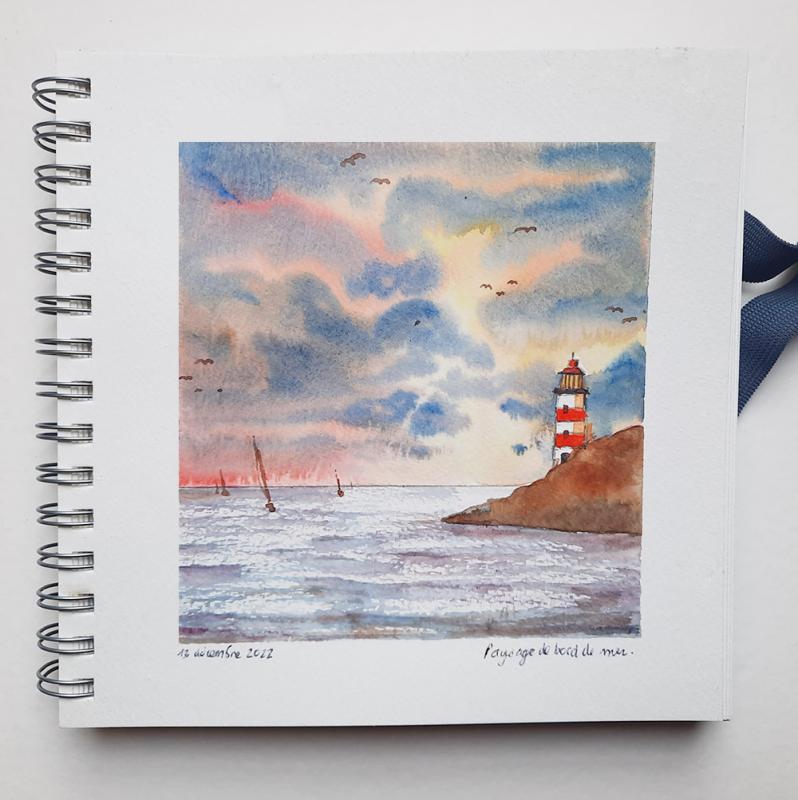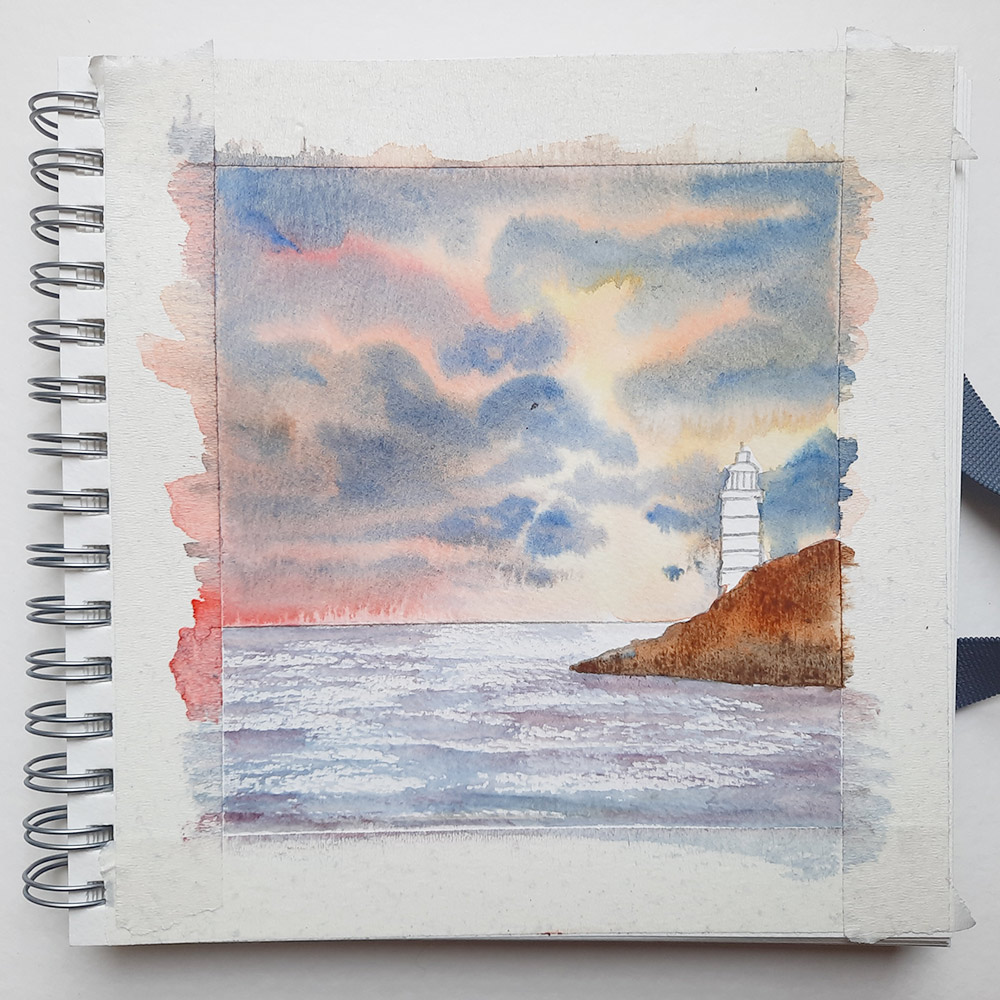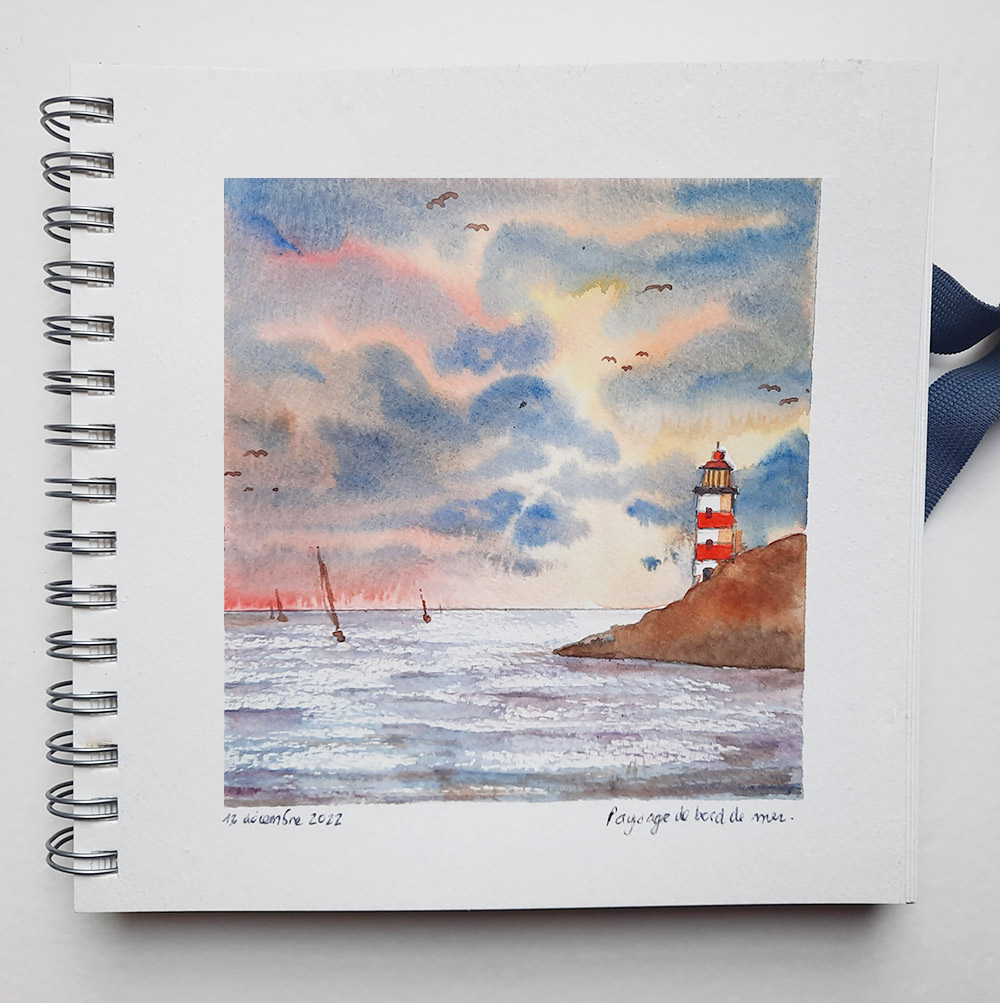
Watercolour allows you to create many effects with fewer means. Colour tone, paper grain and choice of brushes are the steps to consider to easily create a seaside landscape.
Time required: 1 hour
Equipment used:
• Canson Mixed Media Artist Art Book
• Colours: Daler-Rowney Aquafine
• Brushes: Daler-Rowney Aquafine
• Pencil: Lyra Rembrandt Graphite Set
• Accessories: 2 pots of water, cloth.








